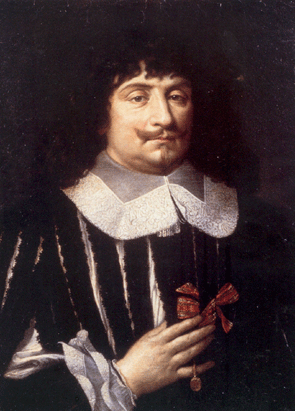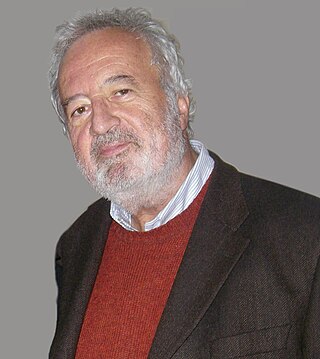
Count Giacomo Taldegardo Francesco di Sales Saverio Pietro Leopardi was an Italian philosopher, poet, essayist, and philologist. He is considered the greatest Italian poet of the nineteenth century and one of the most important figures in the literature of the world, as well as one of the principals of literary romanticism; his constant reflection on existence and on the human condition—of sensuous and materialist inspiration—has also earned him a reputation as a deep philosopher. He is widely seen as one of the most radical and challenging thinkers of the 19th century but routinely compared by Italian critics to his older contemporary Alessandro Manzoni despite expressing "diametrically opposite positions." Although he lived in a secluded town in the conservative Papal States, he came into contact with the main ideas of the Enlightenment, and, through his own literary evolution, created a remarkable and renowned poetic work, related to the Romantic era. The strongly lyrical quality of his poetry made him a central figure on the European and international literary and cultural landscape.

The Secretary of State of His Holiness, known as the Cardinal Secretary of State, presides over the Holy See's Secretariat of State, which is the oldest and most important dicastery of the Roman Curia. The Secretariat of State performs all the political and diplomatic functions of the Holy See and the Vatican City State. The secretary of state is sometimes described as the prime minister of the Holy See, even though the nominal head of government of Vatican City is the President of the Pontifical Commission for Vatican City State.

Marco Girolamo Vida or Marcus Hieronymus Vida was an Italian humanist, bishop and important poet in Christian Latin literature.

Caterina Sforza was an Italian noblewoman, the Countess of Forlì and Lady of Imola, firstly with her husband Girolamo Riario, and after his death as a regent of her son Ottaviano.
Antonio Abati was an Italian baroque poet. He was a member of several Italian literary academies, including the Umoristi, where he read his satire Ragguaglio di Parnaso, dedicated to the bad poets of the times. Between 1634 and 1638, Abati was in Viterbo, where he made the acquaintance of Salvator Rosa. Rosa was in large part inspired to become a satirist by his example. His satires were first published in Venice in 1651 and went through a number of editions.

Francesco Selmi was an Italian chemist and patriot, one of the founders of colloid chemistry.

Antonio Randa was an Italian painter of the classicist period, active in Ferrara, Modena, Rovigo, Florence, Comacchio and his native Bologna.

The Diocese of Carpi is a Latin diocese of the Catholic Church in Emilia Romagna, Italy. It is a suffragan of the Archdiocese of Modena-Nonantola.

Girolamo Graziani was an Italian poet and diplomat.

Carlo Francesco Pollarolo was an Italian composer, organist, and music director. Known chiefly for his operas, he wrote a total of 85 of them as well as 13 oratorios. His compositional style was initially indebted to the opera tradition of Giovanni Legrenzi and Carlo Pallavicino, but he moved beyond this style with innovations to the compositional structure of the aria characterized by expanded forms and orchestral elaborations. His early work used three part strings in the Legrenzi and Pallacino tradition of orchestration, but his mid and later works had developed into a richer orchestration of five strings parts and expanded instrumentation of brass and woodwinds. He was the first Venetian opera composer and one of the earliest Italian composers to use the oboe in his opera orchestrations.

Ezio Maria Gray was an Italian fascist politician and journalist. Gray was the architect of the Grand Design for a Mediterranean Confederation dominated by a Latin Alliance. His geopolitical ideas influenced the development of Mussolini's expansionist strategies.

Fulvio Testi was an Italian diplomat and poet who is recognised as one of the main exponents of 17th-century Italian Baroque literature. He worked in the service of the d'Este dukes in Modena, for whom he held high office, such as the governorship of Garfagnana. Poetically, alongside Gabriello Chiabrera, he was the major exponent of the Hellenizing strand of Baroque classicism, combining Horatianism with the imitation of Anacreon and Pindar. His poems tackle civic themes in solemn tones, showing Testi's lasting anti-Spanish and, consequently, pro-Savoia political passions. Accused of treason for having tried to set up diplomatic relations with the French court, he was imprisoned and died in jail soon after. According to Giacomo Leopardi:
If he'd been born in a less barbarous age, and had had more time than he did to cultivate his talent, he would doubtless have been our Horace, and perhaps been hotter and more vehement and more sublime than the Latin man

Il Cromuele is a tragedy in five acts, released in 1671. It was conceived and written by Girolamo Graziani, through the sixties of the 17th century, in Modena, during the troubled reign of Laura Martinozzi.

Canti is a collection of poems by Giacomo Leopardi written in 1835. The Canti is generally considered one of the most significant works of Italian poetry.

Sergio Vartolo is an Italian harpsichordist, organist, musicologist and conductor; in the past he was also active as a countertenor. In 1996 he was appointed maestro de capella of the Cappella Musicale di San Petronio di Bologna founded in 1436. He has an extensive discography, both as a harpsichordist - the complete works of Girolamo Frescobaldi, and as a conductor - particularly works by Giovanni Paolo Colonna and Giacomo Antonio Perti associated with San Petronio, but also operas by Claudio Monteverdi and others.

Fernando Vianello was an Italian economist and academic. Together with Michele Salvati, Sebastiano Brusco, Andrea Ginzburg and Salvatore Biasco, he founded the Faculty of Economics of the University of Modena and Reggio Emilia.

Teresa Landucci Bandettini was an Italian dancer, composer of extemporaneous verse, and poet, who is remembered as the Figurante Poetesca.

Gianni Berengo Gardin is an Italian photographer who has concentrated on reportage and editorial work, but whose career as a photographer has encompassed book illustration and advertising.
During the 1942–43 season Associazione Calcio Torino competed in Serie A and Coppa.
Gian Piero Brunetta is an Italian film critic, film historian, and academic.

















